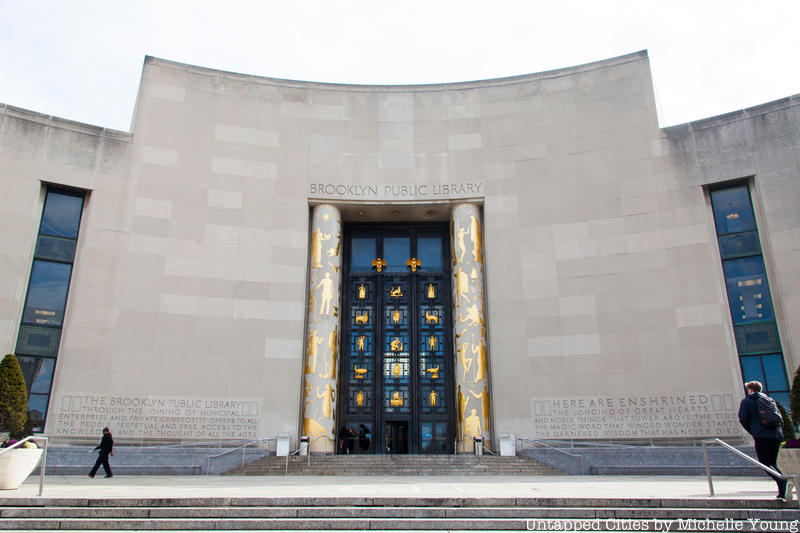9. The Brooklyn Public Library (1896)

The Brooklyn Public Library, founded in 1896, is the sixth largest public library system in the United States. Although construction of the library began in 1912, it ceased until 1935 due to financial difficulties caused by World War I and the Great Depression. Construction resumed thanks to a $16 million dollar donation from industrialist Andrew Carnegie.
In 1935, the architects Alfred Morton Githens and Francis Keally, known for designing beautiful libraries, were commissioned to redesign the building facade while retaining the existing foundations and steel skeleton already in place. Their redesign would simplify and bring a clean geometry to the limestone exterior dominated by vertical pilasters between enormous brass window openings. With the building plan inspired by the leaves of an opened book, the concave limestone “spine” at the main facade follows the curve of Grand Army Plaza. The library officially opened to the public in 1941 and now offers public programming such as educational discussions, meditation classes, and more.





